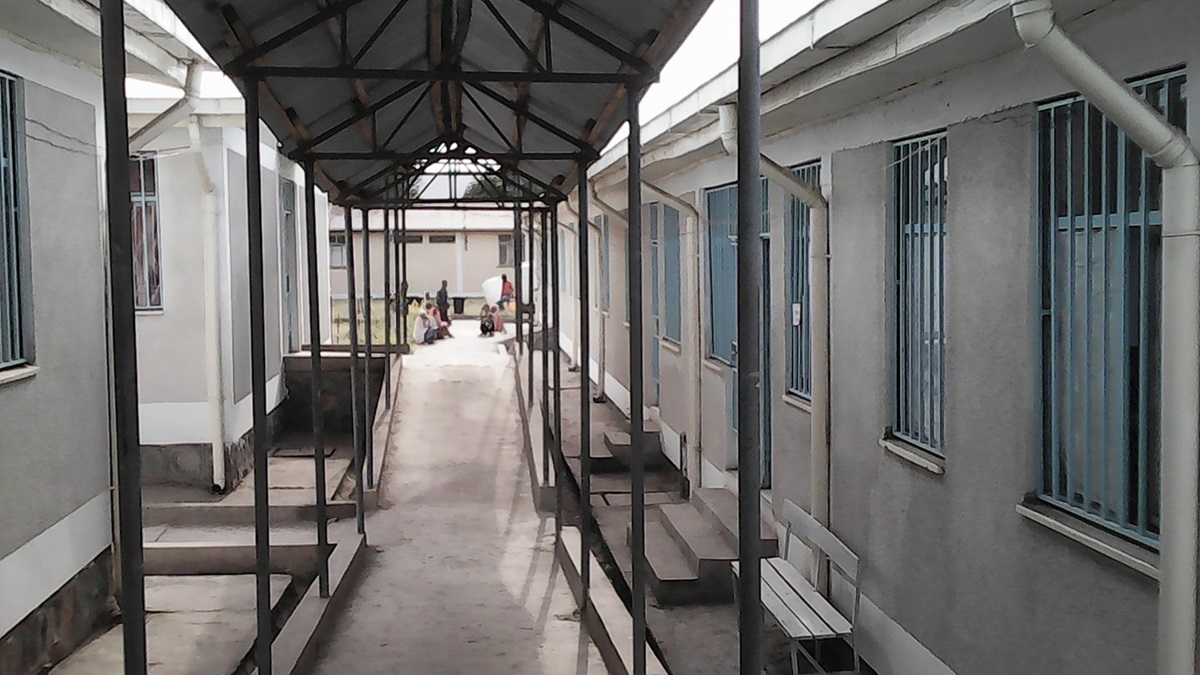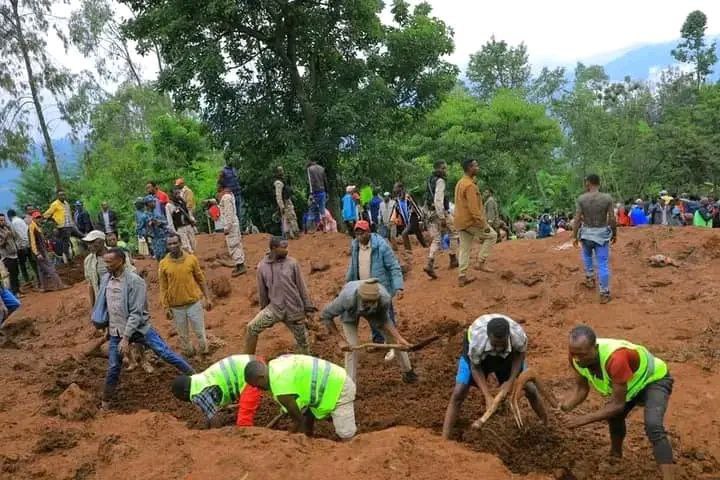Feature analysis: Lives Uprooted by war: From Wag Hemra zone to the streets of Addis Abeba

By Etenesh Abera @Eteneshab
Addis Abeba – A group of young girls, some carrying infants on their backs, go around cars asking for bucks in the bustling streets around the traffic light stop in Figa Sahlite Mihret in Bole sub-city of the capital. From a distance, this scene is nothing out of the ordinary in Addis Abeba. But from close up, this group of girls is no ordinary homeless people asking for coins. These women are farmers who fled the war in the Wag Hemra zone of the Amhara region.
Silas 18, is a mother of one who fled from Tsagebj woreda of Wag Hemra zone now living in the streets of Addis Abeba. “ It took us two weeks to reach Addis Abeba by foot,” she told Addis Standard. Back home, Silas and her family made a living by farming. After fleeing the war with her husband and arriving in Addis, and the family resorted to begging for coins. Metu, a 20 year old girl from the woreda, was pregnant while she fled the war. These days she goes around with her 3 months old infant on her back. “I gave birth after I arrived in Addis Abeba,” she said.

Those who didn’t make it to the capital like Silas and Metu, are sheltered in in Sekota, Weleh and Zikuwala woredas. In the latest announcement on 31 March, the Wag Hemra zone communication bureau announced that the number of IDPS has surpassed 65,000. A total of 16,376 people are sheltered in informal IDP centers while 49,381 people are hosted by the community, the statement said, adding, “Majority of the IDPs are from Tsagebj woreda making up 20,000 of the total number.”
The Wag Hmera zone communications facebook page quoted the head of the zonal Disaster Prevention and Food Security bureau, Desta Getahun as saying, “An average of 2000 IDPs arrive from Abergele, Tsagebj, Zata, Korem and Alamata, Zukuala and Seqota surrounding woredas daily.”
Isayas Moges, PR head of the Sekota Zuria Woreda Prosperity Party office, said “Some woredas out of the eight woredas in the Wag Hmera zone are still under Tigrayan forces. In an interview with Addis Standard earlier in march, the local official said, “Especially Abergele and Tsagebj are fully under their control. Three kebeles of Sekota zuria woreda and four kebeles of Zuquala woredas are also under the control of the Tigrayan armed forces. There is no active war but the Ethiopian defense force and the Amhara regional forces have not reclaimed those areas.”
IDP crisis
The Amhara region disaster prevention and food security facilitation commission stated that more than 11.6 million people in the region need daily food assistance. Iyasu Mesfin, the head of public relations of the commission, discussed with Addis Standard, the various reasons that led to people being displaced and in need of humanitarian aid, conflict being the primary cause.
Iyasu said that over 900,000 fled conflict in the Oromia and Benishangul Gumuz regions, and 1.4 million people were displaced by the conflict with Tigrayan forces while the remaining 9.3 million internally displaced people are from areas affected by the war. According to the PR head, IDPs from Oromia and Benishangul Gumz regions are sheltered in West Gojjam, North Showa, South Wello, and Wag Hmera zones of the region. Earlier in March, the region’s disaster prevention and food security facilitation commission stated that the IDPs need at least 1.2 million quintals of grain per month.
Iyasu further stated that although the lack of transportation is preventing the commission from covering larger areas, aid is coming in from the federal and regional governments, regional non-government organizations, and the community.
Similarly, a report by the United Nations Office for the Coordination of Humanitarian Affairs (OCHA) revealed that hundreds of thousands of people were displaced mainly from Tigray and bordering areas as well as from Oromia regions due to conflict and violence. The majority of IDPs were displaced from Raya Alamata, Ofla, Zata, Korem, and Raya Azebo woredas of Southern Zone, Tigray Region, the report said.
Lack of health care services
Isayas, PR head of the Sekota Zuria Woreda Prosperity Party office said that the regional government was making the larger part of the donation, underlining that the issue is beyond the zonal administration’s capacity. He underlined the lack of health care services that plagues the IDP shelters. Corroborating his statements, another local official said, “A town of 49,000 population is hosting more than 170,000 IDPs,” Tamiru Yemeraw, the head of the health bureau in Sekota said, adding, “The likelihood of an outbreak is worrying.”
He continued, “ We opened two mobile clinics with the medical equipment we had. We host 60-150 patients daily.” Tamiru shed a light on the need for health services provision in the IDP shelters. According to Tamiru, the health bureau is working on the prevention of communicable diseases due to the pervasiveness of such diseases in informal shelters. Lack of proper hygiene leaves people vulnerable, he said.
“Scabies was detected in IDPs who came from Abergele woreda,” he said, and added in a relief, “We were able to contain it before it spread.” The shelters lack water, food, and bathrooms, he explained. The biggest problem is the lack of proper bathrooms, Tamiru said and expressed his fear of a crisis in case an outbreak occurs. He called for the government to pay due attention to the increasing number of IDPs.
Shortage of medicine
The problem doesn’t stop there. In a recent interview with VOA Amharic, the administrator of Abergele woreda, Alemu Kifle stated that the death toll from shortage of food and medicine has reached 120. Children and the elderly constitute majority of the deaths, according to him, Adults with medical conditions including HIV and hypertension died due to lack of medication whereas children died due to malaria.
Shortage of food, Malnutrition in Children
The zonal communications official, Kefyalew Debash, who spoke to BBC Amharic , stresses that unless the children impacted by food shortages are afforded immediate aid, a worrying situation seems to be imminent. ‘’ The noses and mouths of the children are bruised, this can spread like a communicable disease and present a scenario even worse than the 1977 E.C. famine. The outcomes of diseases affecting children without access to food is quite obvious‘’, he said.
The official noted that the presence of Tigrayan forces in several areas, coupled with the drought that affected most woredas in the lowlands, has displaced over 61, 600 people. He recalled that prior to the onset of the war, 151,000 people depended on food security programs.
The lack of necessary social services in needed quantities stands as the biggest problem of the woreda according to the official. Kefyalew states, Abergele, Tsegabeji and Zequala woreda and 6 other kebeles still remain under the control of Tigrayan forces. Furthermore, he emphasized that returning the displaced from these areas will be ‘’ lasting solution’’ to the IDP crisis. AS








